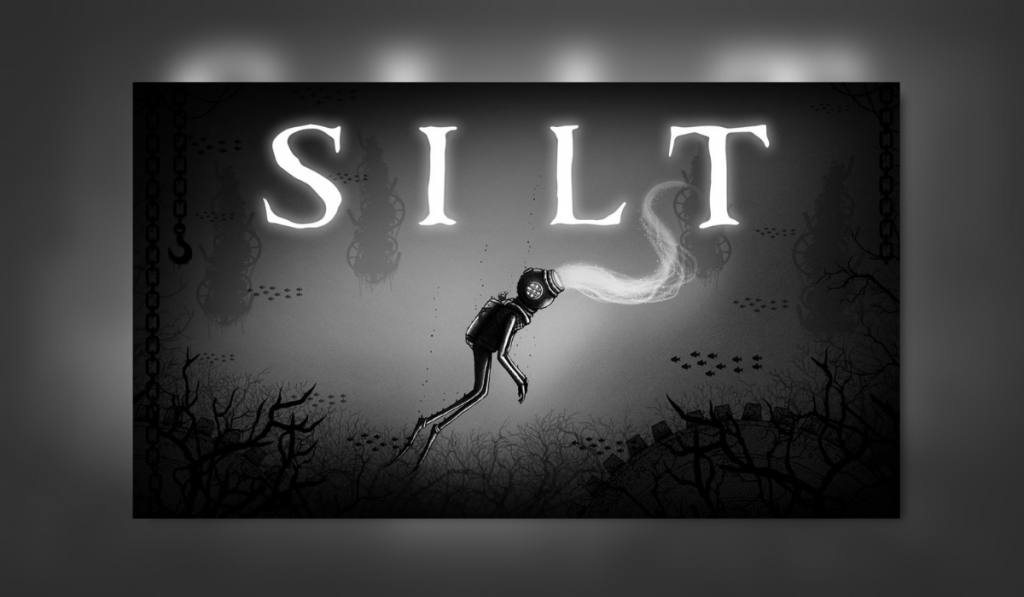
Since it was announced, I’ve paid a fair bit of attention to the conversations around Silt (Spiral Circus, Fireshine Games). Limbo is mentioned as a comparison more often than not. In a way this isn’t surprising. Both indie games share an obvious similarity in their black and white aesthetic. Tom Mead, the lead designer on the project, told me it was a flattering comparison and that PlayDead were one of his favourite studios. But he felt that it was a ‘basic comparison’—only down to the colours.
I think he’s right. In a way, I know he’s right.
Full disclosure: I’ve known Tom for a long time. We went to university together and have been housemates more than once—in fact, he’s one of my closest friends. Without doubt, this makes my ability to review Silt objectively a little difficult, but I will try. And I hope one or two personal insights will make up for my lack of impartiality.
Does Silt only sink, or will it rise to the top?
Since around 2009 Tom has been developing black and white paintings and illustrations based on abundant dark, nightmarish animal creatures and scenes. His website has a lot of examples (www.mrmead.co.uk). There are stripe-shirted dream-logic masked humanoids, giant dream collectors, cats with lighthouse eyes, surreal banquets—and much more. Over the last decade, he’s been commissioned to do murals of these creatures in the UK, in Iceland, and in South Africa. One of his first productions was a card pack with animal creatures on each of the 52 cards—including one creature in a Silt-esque diving bell. My point is: a lot of work has come before Silt.
So, to me, Silt doesn’t look like Limbo—it looks like a Tom Mead game. And that is an incredibly exciting thing to see. In Tom’s work Spiral Circus have a goldmine of visual material to draw from in upcoming games. Their future seems very bright, and they deserve to be talked about in their own right.
It should be noted of course that games are not made by lead visual designers alone. Silt has a core team of three more people beyond Tom—Dom Clarke, lead designer and co-founder of Spiral Circus, Nick Dymond, sound designer and composer, and Antonenoko Anton, Animator.
Silt is out now on all major platforms.
Gameplay
Silt is a 2D swimming puzzle game. Interestingly, while Limbo was not a direct inspiration, Megadrive classic Ecco the Dolphin genuinely was. It’s influence is there in the underwater setting. In Silt you control a diver through a number of screens that feature deeply-atmospheric environments and plenty of puzzles. Movement is controlled by the joystick. There is a swim-faster button, an action button—and, most interestingly, a button that controls the gameplay USP: the dark and creepy possession mechanic. This is a proton pack-esque stream of soul that comes from the diver’s visor which you use to possess the bodies of sea creatures.
Possession!—I can hear the way Tom Mead says it. He says it with relish.
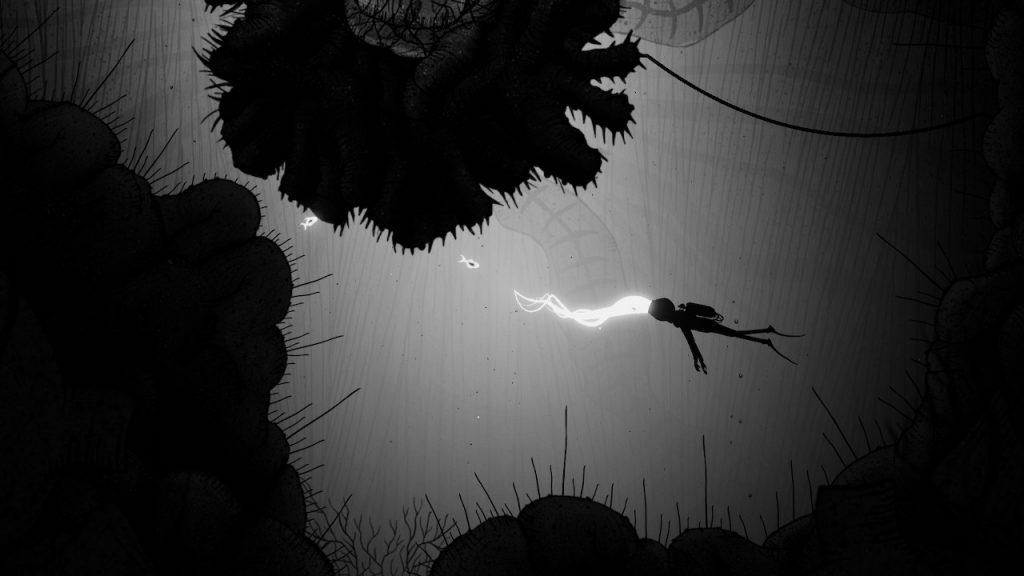
When you possess something, the diver turns upside down and hangs lifelessly in the water. You control the fish/ray/crab etc. and use their unique abilities to solve the puzzles. One fish has a chomping jaw that cuts through vines, another acts as a battering ram. More and more possessable creatures appear throughout the game, leading to fresh puzzle ideas and challenges. Possession is a theme that suits Tom’s world perfectly. It suits the off-beat ambience in the game.
In Silt there is no tidy narrative; in fact, narrative is almost entirely absent. Silt is a dark and atmospheric experience, more of a droning nightmare than a story. Certain things, in a dreamlike way, don’t really connect. Without giving away any spoilers, the origin of the diver over the course of the game starts to seem more complicated than appeared at first. By the end of the game, the meaning of this will be left up to your interpretation.
In place of narrative is atmosphere. And Silt does atmosphere excellently. The game’s brooding, underwater ambience is nicely completed by Nick Dymond’s Lynchian soundscape. Underwater statues and structures and strange biomechanical constructions hint at a bigger mystery beyond the contents of the game. It is this combination of visual and sound that effectively draws you into the experience.
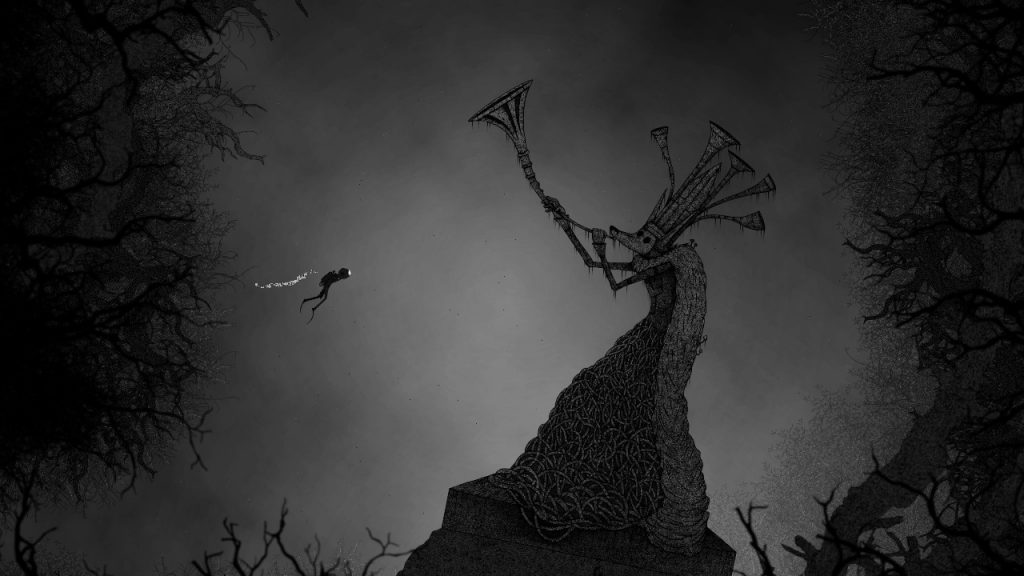
The ‘Tom Mead’ design is the game’s outstanding strength. His illustrations and visual ideas are fun to look at, and there is nothing derivative in this design work: this is a honed style from an artist who is enjoying himself in a fresh new medium.
The puzzles themselves are fun and intriguing. Plenty of them are enjoyably inventive. One or two might be a little simplistic, but that can be forgiven in the name of pacing.
There were, however, a few frustrating moments. Sometimes the timing and exact position I needed to place the diver was confusingly specific—I shook the Switch in frustration more than once, and a couple of the bosses could have been a little more lenient with what I was expected to do in the time allowed. But I enjoyed the challenge, and enjoyed my time with the game.
The run time isn’t huge—a honed 3-4 hours, and I might have enjoyed a bit more of a sense of ‘building to a climax’. But, as I said earlier, this isn’t a game bound by narrative conventions, and nightmares do as nightmares do.
Graphics and Audio
Originally, I played the game on PC with maxed out graphical settings, and there was indeed a marked difference to the depth of lighting than is present on the Switch. Silt looks amazing on other systems, and if you can get it on something more powerful, you probably should.
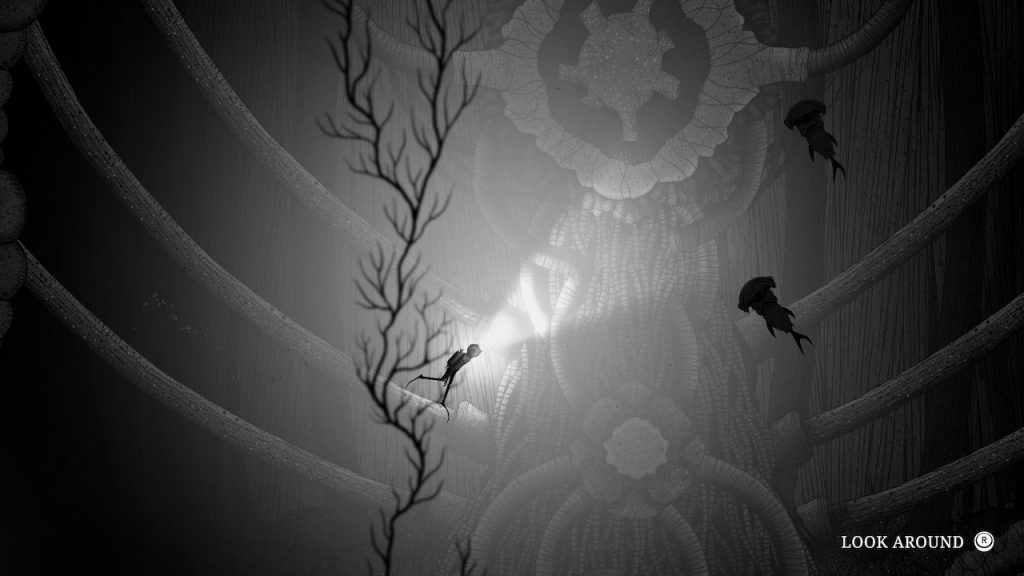
For the review copy of the game, I played Silt on the Switch OLED, and I’m happy to report that despite the noticeable changes, it still looked good (and it runs well too). The black and white graphics made the most of the OLED screen.
The game looks good on the TV too. If you don’t have another avenue to play the game with better graphics then the Switch version is a good option.
As mentioned earlier, the audio is made up of underwater ambience and subtle sounds. These complete the game and help lure you into the experience.
Longevity
Silt isn’t a long game—roughly three and a half hours on my play through. It’s an old-school run time, for sure, but there’s some decent challenge to be had within that.
To bring Limbo up one more time, Silt does share one more feature with that game: both are fun to show other people. The atmosphere and visuals are appealing to kids and adults alike. And with its short runtime, more casual gamers can see everything it has to offer without too much time commitment. This might add a good bit of unexpected value for a lot of people—as Silt becomes a game to share with family and visitors.
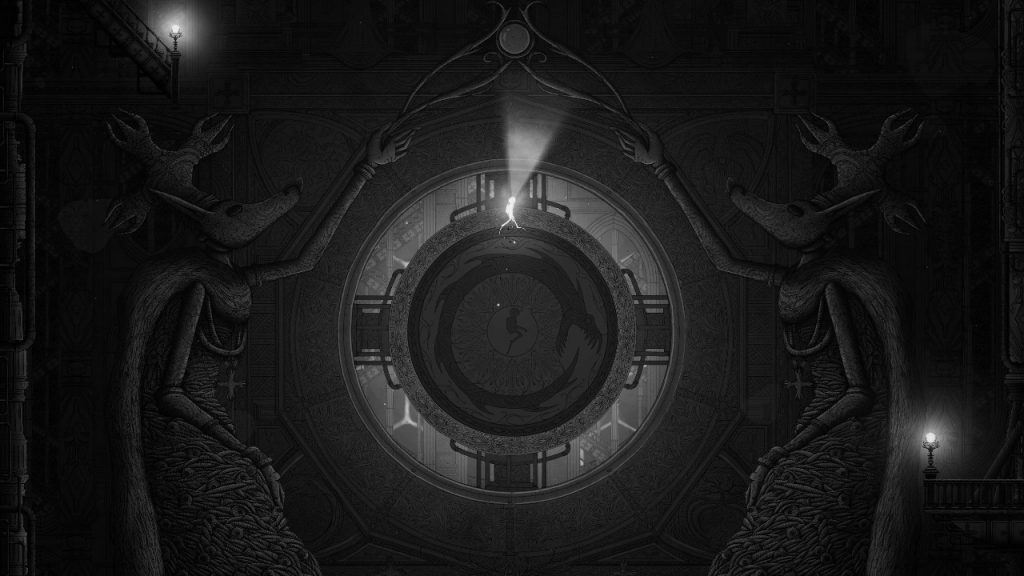
Final Thoughts
Silt is the beginning of what will hopefully become a fresh new studio in indie gaming. The visual comparison to games like Limbo will soon be forgotten I’m sure. Silt is an indie game with its own nightmarish rules and a subtle logic. There is challenge to be had in its puzzles, so if mind-bending nightmares are your thing, and if you like the thought of possessing and sucking up the souls of giant creatures then hopefully you also think it deserves the award below.
I give Silt the Thumb Culture Gold Award.

Disclaimer: A code was received in order to write this review.

YouTube | Facebook | Twitter | Instagram | Discord | Podcast
